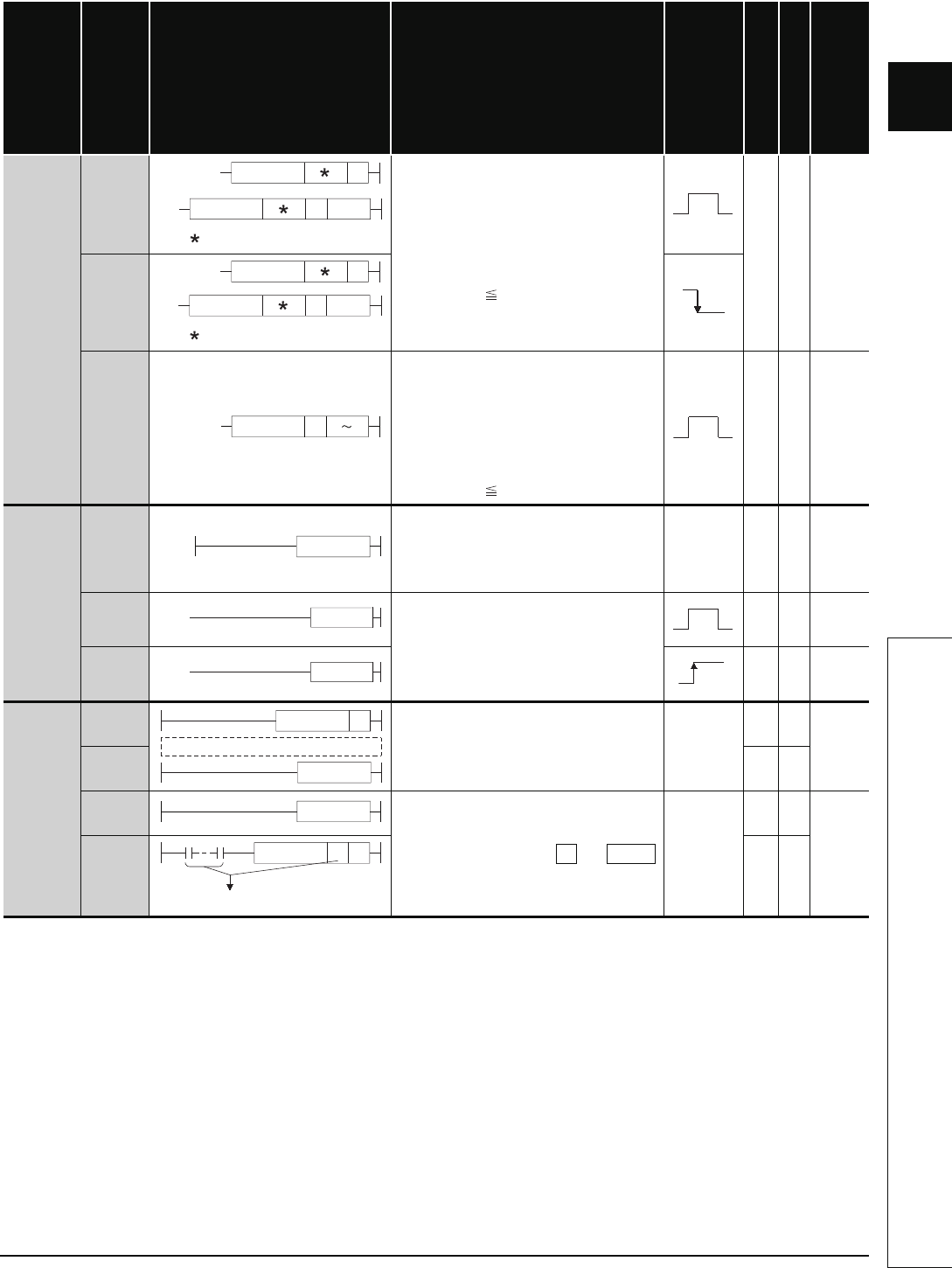
2-39
1
2
4
4
2
6
7
8
2.5 Application Instructions
2.5.6 Structure creation instructions
Table 2.23 Structure Creation Instructions (Continued)
*1: n indicates number of arguments for subroutine program.
*2: n indicates the total of the number of arguments used in the subroutine program and the number of program
name steps. The number of program name steps is calculated as "number of characters in the program/2"
(decimal fraction is rounded up).
Category
Instruction Symbol
Symbol Processing Details
Execution
Condition
Number of Basic Steps
Subset
See for Description
Subroutine
program
calls
EFCALL
• Performs non-execution processing of
subroutine program Pn if input
conditions have not been met. (S1 to
Sn are arguments sent to subroutine
program. N 5)
*2
3
+
n
-7-125
EFCALLP
XCALL
• Executes subroutine program Pn when
input condition is met.
• Performs non-execution processing of
subroutine program Pn if input
conditions have not been met. (S1 to
Sn are arguments sent to subroutine
program. N 5)
*1
2
+
n
-7-129
Select
refresh
COM
• Performs auto refresh of intelligent
function modules, link refresh, auto
refresh of CPU shared memory, and
communications with peripherals.
1-7-134
CCOM
• Performs auto refresh of intelligent
function modules, auto refresh of CPU
shared memory, and communications
with peripherals after the input
conditions are met.
1-7-141
COM
1-7-137
Fixed
indexing
IX
• Perform indexing for individual devices
used in device indexing ladder.
2-
7-144
IXEND
1-
IXDEV
• Stores indexing value used for indexing
performed between the and
to the device designated by D or later.
1-
7-148
IXSET
3-
EFCALL Pn
EFCALL Pn
S1toSn
:File name
EFCALLP Pn
EFCALLPPn
S1toSn
:File name
XCALL
Pn
S1 Sn
COM
CCOM
CCOMP
IX
IXEND
S
Device indexing ladder
IXDEV
IX IXEND
Designates indexing value.
IXSET SD


















